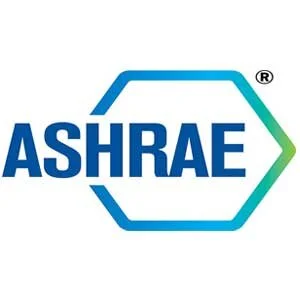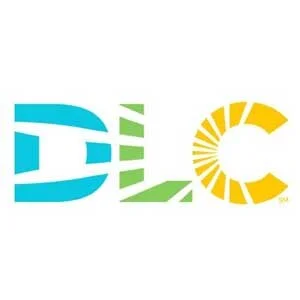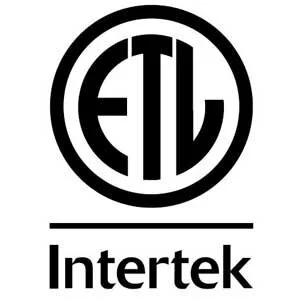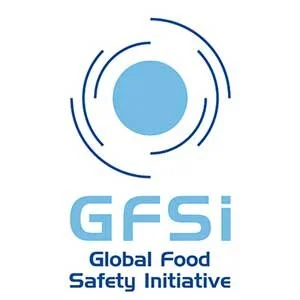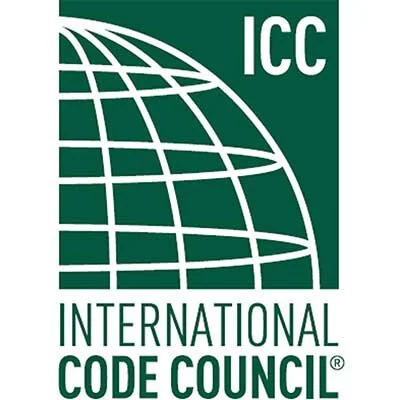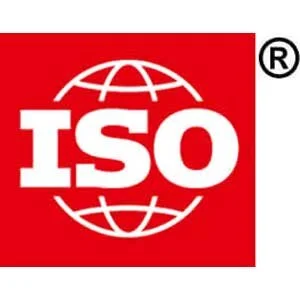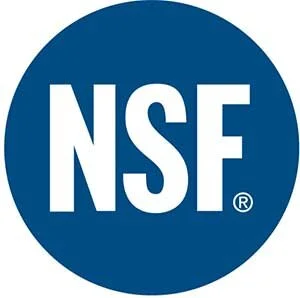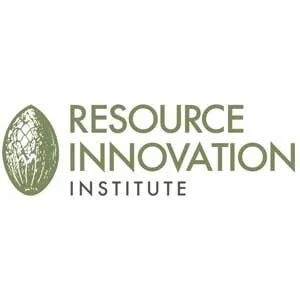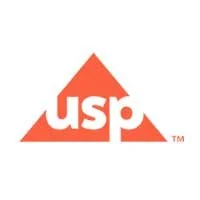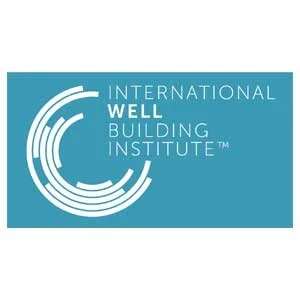
Sustainability is no longer about doing less harm. It’s about doing more good.
Table of Contents:
Sus·tain·a·bil·i·ty
Sustainability means many things to many people. Depending on your point of view, to make something sustainable can pertain to environment, social equity or economic development. It can be seen from the perspective of a consumer or a business.
We will often see sustainability broken down into the three buckets, or pillars, of environment, economic and social, regardless of POV.
What are the three pillars of sustainability?
In a perfect world, environmental sustainability might occur when ecological integrity is maintained. That is to say that all of the earth’s environmental systems are kept in balance while natural resources within them are consumed by humans at a rate where they are able to replenish themselves. (McGill University)
Economic sustainability, according to Thwink.org, occurs when a political unit, such as a nation, has the preferred percent of its population below its desired minimum standard of living level. The percent needs to be very low, somewhere around 5% or less, because everyone below the level is suffering, either physically due to poor health or psychologically. So, to be economically sustainable is to maintain independence while having access to all of the resources required to survive, including financial.
The United Nations Global Compact describes social sustainability as the practice of “identifying and managing business impacts, both positive and negative, on people.” It is the notion that every living being have access to basic necessities while being provided with enough resources to keep their families and communities healthy and safe.
The University of Alberta’s Office of Sustainability put together a definition of sustainability that does a good job of capturing the overarching meaning.
“Sustainability is the process of living within the limits of available physical, natural and social resources in ways that allow the living systems in which humans are embedded to thrive in perpetuity.”
What is sustainable development?
The official definition of sustainable development was published for the first time in the Brundtland Report in 1987. It is the idea that human societies must live and meet their needs without compromising the ability of future generations to meet their own needs. According to You Matter, “sustainable development is a way of organizing society so that it can exist in the long term. This means taking into account both the imperatives present and those of the future, such as the preservation of the environment and natural resources or social and economic equity.”
ACS - Cannabis and the Environment: What Science Tells Us and What We Still Need to Know
Increases in worldwide legalization trends for medical and recreational cannabis consumption are likely to fuel the growth of an already important global cannabis industry. To minimize negative environmental outcomes, a systemic understanding of cannabis’ environmental impacts is essential.
As with other agricultural crops, best management practices can minimize environmental impacts. We suggest cannabis-specific policies to minimize impacts from cannabis.
Here we review peer-reviewed research on relationships between cannabis and environmental outcomes, and identify six documented impact pathways from cannabis cultivation (land-cover change, water use, pesticide use, energy use, and air pollution) and consumption (water pollution). On the basis of reviewed findings, we suggest policy directions for these pathways.
AHPA - American Herbal Products Association
The American Herbal Products Association (AHPA) was founded in 1982 to promote the responsible commerce of herbal products to ensure that consumers continue to enjoy informed access to a wide variety of herbal goods. Their seminal Herbs of Commerce (HoC) (first published in 1992) was officially incorporated by the US Federal Government into the Code of Regulations (21 CFR 101.4) establishing consistent naming of botanical ingredients for dietary supplements. With precedent for federal recognition, their active Cannabis Committee is actively paving the path for safe and consistent use of cannabis products.
ASABE - The American Society of Agricultural and Biological Engineers
The American Society of Agricultural and Biological Engineers (ASABE) is an educational and scientific organization dedicated to the advancement of engineering applicable to agricultural, food, and biological systems. ASABE develops standards through its standards committees. Relevant cannabis committees include:
ES-300 Energy Utilization & Application: Leads and coordinates the activities of ASABE in matters related to electro-technology as related to agriculture energy efficiency, electrical wiring systems, and electrical utility programs.
ES-310 Ag Lighting Group: Leads and coordinates the activities of ASABE in matters related to agricultural lighting systems (combined with ES-311 Electromagnetic Radiation Application for Plants)
The ASABE Standards Committee ES-311 X644 Working Group is developing Draft Standard ASABE X644 Performance Measures of Electromagnetic Radiation Systems for Plants.
ASABE Plants, Animals, and Facilities Systems (PAFS) Technical Community is working with ASHRAE (through its Plant and Animal Environment technical committee) to develop x653 related to HVAC and lighting for indoor plant growth without sunlight.
ASHRAE - American Society of Heating, Refrigerating and Air Conditioning Engineers
American Society of Heating, Refrigerating and Air Conditioning Engineers (ASHRAE) is a professional organization seeking to advance HVACR systems and design.
The ASHRAE Multidisciplinary Task Group coordinates technical activities related to the design of indoor plant production facilities and their HVAC&R systems and considers deliverables created by Technical Committees like:
Technical Committee 2.2 on Plant and Animal Environment (concerned with the relationships of environmental conditions and the growth, health, and reproduction of plants and animals).
Link to standards relevant to cannabis production:
ASTM - American Society for Testing and Materials
Established in 1898, ASTM International formerly known as the American Society for Testing and Materials is a globally recognized leader in the development and delivery of voluntary consensus standards. Working in an open and transparent process and using ASTM’s advanced IT infrastructure, our members create the test methods, specifications, classifications, guides, and practices that support industries and governments worldwide. ASTM Committee D37 on Cannabis has 1,000 stakeholders from 30 countries working together to advance the industry by addressing quality and safety through consensus standards.
Examples of standards that have already been approved for the cannabis industry use include:
D8250 Standard Practice for Applying a Hazard Analysis Critical Control Points (HACCP) System for Cannabis Consumable Products
D8222 Standard Guide for Establishing a Quality Management System (QMS) for Consumer Use of Cannabis/Hemp Products
D8197 Standard Specification for Maintaining Acceptable Water Activity (aw) Range (0.55 to 0.65) for Dry Cannabis Flower Intended for Human/Animal Use
CAA - Harrisburg University Center for Advanced Agriculture and Sustainability
The Harrisburg University Center for Advanced Agriculture and Sustainability (CAA) exists to support the adoption of technology-enabled approaches to sustainable and localized farming methods.
The CAA is convening an international network of engineers, scientists, entrepreneurs and industry leaders to bring new applied research programs and agricultural technologies to Pennsylvania.
In part, the CAA works to advance sustainability by engaging in applied research and validation of technologies and methods that are both sustainable and scalable. Compliance with Environmental, Social and Governance (ESG) standards are be prerequisite for technologies and business models supported by the Center.
CBT - Cannabis Business Times: 2020 State of the Industry Report
GREENHOUSE PRODUCTION CONTINUES TO BE THE NO. 1 TOOL FOR REDUCING YOUR INITIAL AND OPERATIONAL COSTS FOR A 52- WEEK PRODUCTION FACILITY
WHETHER GROWING IN A GREENHOUSE, INDOORS OR OUTSIDE, cultivators are running more efficient operations, as evidenced by the continuous decline in production costs seen during the years. For example, when growers were asked to provide their average production cost per pound of dried flower in 2019, the number that fell in the middle of all responses (the median) when growing in a warehouse, greenhouse or outdoors was $400, $261 and $130, respectively. This year, those figures have declined to $396, $233 and $100, respectively. When compared to 2018 data the decreases are even more dramatic. Cultivators are continuing to utilize automation technology when cultivating, which could be increasing efficiency and lowering production costs. As noted later in the study, competition and declining prices have been cultivators’ top challenges for multiple years, so decreasing the cost to produce a pound of flower may be a top priority.
CC - The Cannabis Conservancy
Our mission is to empower and assure that the Cannabis industry achieves environmental, economic, and social sustainability.
The Cannabis Conservancy™ provides an internationally recognized Sustainability Certification, SIMPLY CERTIFIED, to Cannabis organizations that adhere to Good Agricultural Practices, are free of harmful chemical inputs, utilize waste reduction methods, are energy efficient, and conserve water. We offer our certifications globally.
Through our processes we also work to preserve the historic, cultural, and genetic heritage of Cannabis.
CDPHE - Colorado Department of Public Health & Environment
The cannabis industry's growth and processing of hemp and marijuana has environmental impacts. We have been working collaboratively to raise awareness and establish best practices for the industry to reduce their environmental footprint. Together, we are developing innovative strategies and tools to help improve sustainability in the industry.
The right resources, a commitment to greener business practices and raising awareness will result in an eco-friendly sustainable and renewable industry that will flourish for generations.
Marijuana businesses are also regulated by the Marijuana Enforcement Division
Hemp Cultivators are also regulated by the Department of Agriculture
CRC - University of California at Berkeley: The Cannabis Research Center
The Cannabis Research Center (CRC) is a research group based at the University of California, Berkeley.
Our goal is to promote interdisciplinary scholarship on the social and environmental dimensions of cannabis production. Through scientific research and engagement with community, government, and academic entities, we hope to advance understanding of cannabis agriculture in socio-ecological systems at local, national, and global scales.
Research focuses on Policy and Land Use, Environment, and People and Culture.
DLC - The Design Lights Consortium
The Design Lights Consortium (DLC) is a non-profit organization that promotes high-quality lighting solutions in collaboration with utilities and others and establishes standards for different lighting types.
In many jurisdictions, the DLC Technical Requirements for Horticultural Lighting which establishes minimum performance standards for LED lighting fixtures in order to be listed on their Horticultural Lighting Qualified Product List
Fixtures listing on the DLC Hort QPL may be required in some regions in order to receive utility energy efficiency financial incentives.
EHEDG - The European Hygienic Engineering & Design Group
The European Hygienic Engineering & Design Group (EHEDG) was founded in 1989 as a non-profit consortium of equipment manufacturers, food producers, suppliers to the food industry, research institutes and universities, public health authorities, and governmental organizations.
The EHEDG mission is defined as: “Raise awareness of hygienic engineering, develop guidance and solutions, and provide a platform to promote EHEDG expertise that facilitates networking between hygienic engineering experts from around the world.”
EHEDG actively supports European legislation, which requires that handling, preparation processing, and packaging of food is done hygienically using hygienic machinery and in hygienic premises according to the food hygiene directive, the machinery directive, and the food contact materials directive (see EC Directive 2006/42/EC for Machinery, EN 1672-2 and EN ISO 14159 on Hygiene requirements for the design of machinery). While EHEDG is European Initiative, the EHEDG Certification Logo is becoming more widely seen on food processing equipment sold in the US as a product differentiator, offering assurances of sanitary design, cleanability, sterilizability, and bacterial tightness. It is considered more stringent than other stamps or marks. Auditors or Regulators who might be inspecting a cannabis facility, if they understood this Certification Logo, should have an impression that the operator has invested in more hygienic equipment.
Energy Star / EPA - Environmental Protection Agency
ENERGY STAR® is the government-backed symbol for energy efficiency. With oversight from the Environmental Protection Agency, this program certifies the energy usage and energy efficiency of products, homes, buildings, and industrial plants. By using a common set of metrics objectively applied across categories, companies and end-users can make comparative decisions based on energy efficiency.
In many localities, the use of ENERGY STAR® certified products or achieving certification for a building or industrial plant may qualify for rebates from local utility companies. Cannabis company eligibility to participate in these programs will vary depending on local laws, products in use, and rebates offered by local utility companies.
EQ Research
A Chronic Problem: Taming Energy Costs and Impacts from Marijuana Cultivation
As states move forward with removing barriers to marijuana cultivation, it will be critical to get ahead of the resulting growth in indoor marijuana cultivation to address the impact it may have on growth in energy demand and carbon emissions.
Utilities, PUCs, state and local governments, and the industry itself must work together to improve the dissemination of information, increase awareness of energy impacts, break down barriers to efficient use of energy, and provide incentives for efficient and renewable energy use.
Because the marijuana industry is in its nascent stages in the U.S., making this a coordinated effort could go a long way to turning this “green” industry into a truly verdant one.
ETL - Electrical Testing Laboratories
Founded by Thomas Edison in 1896 as the Lamp Testing Bureau and renamed to the Electrical Testing Laboratories (ETL) in 1904, ETL certifications demonstrate compliance to the requirements of widely accepted product safety standards, as determined through independent testing and periodic follow-up inspections by a Nationally Recognized Testing Laboratory (NRTL). The company is now known as Intertek.
The ETL Listed Mark indicates to distributors, retailers, and customers that a product has been tested by Intertek and found in compliance with accepted national standards. Acceptance of ETL certification varies by locality though it is widely recognized across the United States and Canada.
FTS - Farm Tech Society
The FarmTech Society (FTS) is a non-profit industry association that unites and supports the Controlled Environment Agriculture (CEA) industry and seeks to strengthen the CEA sector, supporting the development and implementation of resilient and future proof methods and technologies for production of vegetables and fruits.
Groups like the Farm Tech Society are important sources for research and sustainable agriculture systems and best practices as well as practitioners to implement sustainable systems in the market.
Many of the systems and best practices developed at the Farm Tech Society for CEA can be applied to the cannabis market.
FDA - U.S. Food and Drug Administration
The U.S. Food and Drug Administration (FDA) oversees the safety of all food, drugs, medical devices, and cosmetics in the United States through the Federal Food, Drug, and Cosmetic Act of 1938. Despite the current status of cannabis as a Schedule I controlled substance, the guidance provided for analogous products, particularly current Good Manufacturing Practices (cGMPs) align with global best practices that industry can follow to ensure product quality and integrity as well as prepare for potential federal legalization. Resources on the current approval process and research pathways have been published by the FDA on their page: What you need to know about cannabis compounds, CBD, cannabidiol, products containing cannabis, scientific data, development & approval process, and much more!
Some states require compliance with The FDA Food Code in their cannabis regulations, but some reference 2013, some 2017. The next issue is expected in 2021. Be aware that The Food Code is for retail and foodservice segments of the industry. Many in the cannabis sector anticipate that when Cannabis is legalized at the federal level, FDA will apply the regulatory approach suitable to manufacturing, such as:
21 CFR 111 - Current Good Manufacturing Practice in Manufacturing, Packaging, Labeling, or Holding Operations for Dietary Supplements
21 CFR 117 - Current Good Manufacturing Practice, Hazard Analysis, and Risk-Based Preventive Controls for Human Food
This is a very complex topic, and depending on how the sector for THC and CBD products evolve and how the products are sold and labeled. Other regulations may become relevant, such as:
21 CFR 211 - Current Good Manufacturing Practice for Finished Pharmaceuticals.
FDA regulations for topicals — cosmetics and soaps, which include 21 CFR 700, 701, 710, 720, 740 and others.
GlobalG.A.P. - The Worldwide Standard for Good Agricultural Practices
We are a global organization with a crucial objective: safe, sustainable agriculture worldwide. We set voluntary standards for the certification of agricultural products around the globe – and more and more producers, suppliers, and buyers are harmonizing their certification standards to match our Company’s Purpose.
Every generation has a right to safe food, and we support farmers to connect them to markets where they can sell their safely and sustainably produced agricultural products by developing and implementing farm assurance systems that are based on facts and recognized across the supply chain.
As of 2020, they have begun a feasibility assessment of bringing their G.A.P certification program to the cannabis industry. Cannabis and hemp businesses that are focused on cultivation of the plant would greatly benefit from incorporating these global best practices into their operation.
GFSI - The Global Food Safety Initiative
The Global Food Safety Initiative (GFSI) is a private organization that oversees and approves different auditing platforms as meeting their criteria for safe food processing. This criterion provides a universal gold-standard of recognition to specific food safety audits. There are currently 10 global GFSI schemes that can award certifications. Cannabis eligibility for certification varies based on scheme and jurisdiction. Some states are requiring a GMP audit, “such as GFSI” in their cannabis regulations.
ICC - The International Code Council
The International Code Council (ICC) has developed a guide for Applying the Codes to Cannabis Facilities, which covers IBC (International Building Code), International Fire Code (IFC), and many others. IBC released Chapter 39 on Processing and Extraction Facilities for the industry to follow.
IES - The Illuminating Engineering Society
The Illuminating Engineering Society (IES) is a community of lighting experts seeking to improve the lighted environment by bringing together those with lighting knowledge and by translating that knowledge into actions that benefit the public.
The IES Horticultural Lighting Technical Committee researches and develops best practices for horticultural lighting using climate-based annual daylighting and electric lighting with lighting and shading controls, with a focus on greenhouses, vertical farms (plant factories), and building atria.
The committee produces Recommended Practices documents, including one for professional lighting designers who are tasked with horticultural lighting.
ISO - The International Organization for Standards
The International Organization for Standards (ISO) is an independent, non-governmental international organization with a membership of 165 national standards bodies that was established in 1946. Today, it has nearly 800 technical committees and subcommittees that manage the standards development process.
ISO standards focus on the business management of an organization and how information and data are reported and responded to. Some of the most common ISO standards relevant to the cannabis space are:
ISO/IEC 17025 – General Requirements for the competence of testing and calibration laboratories
ISO 9001 – Quality Management Systems
ISO 22000 – Food Safety Management
ISO 45001 – Occupational Health and Safety
Additionally, ISO is actively developing cannabis standards in the following three areas:
Safety of cannabis facilities, equipment and oil extraction operations.
Secure handling of cannabis facilities, operations and transportation.
Good production practices guide for cannabis.
Demonstrate competence of testing and calibration laboratories to ensure validity of testing results.
NFD - New Frontier Data
New Frontier Data (NDF) strive to be the nexus of data for the global cannabis industry. Their mission is to inform policy and commercial activity for the global legal cannabis industry. They maintain a neutral position on the merits of cannabis legalization through comprehensive and transparent data analysis and projections that shape industry trends, dynamics, demand and opportunity drivers.
With the legal cannabis market in the U.S. positioned for catalytic growth over the next five years, and with many more countries enacting laws legalizing cannabis use, efficiency practices adopted now will play defining roles in reducing the industry’s total water use during this critical stage of its growth.
Governments and industry regulators can play important roles by incentivizing growers to adopt water-efficiency solutions as parts of broader government efforts to mitigate impacts from climate change on the agricultural economy.
The cannabis industry is primed for breakthrough advances in water efficiency, but significant research and knowledge-sharing will be required to capture and disseminate best practices.
The industry should strongly encourage establishment of data-driven voluntary standards and recognition of top performers.
NSF - National Sanitation Foundation
The National Sanitation Foundation (NSF) originally brought together key stakeholders back in the 1940s to develop the first consensus standards for restaurant equipment sanitation. Public health inspectors liked what they saw, and began requiring product certification to NSF/ANSI standards. Currently, many states approach cannabis regulation from a foodservice perspective and the NSF Mark is desirable for equipment in the Cannabis processing room, such as sinks, rolling stock, dishwashers, and if available for cooking and packaging equipment. Even when cannabis is legalized at the federal level and the FDA regulates following Food Safety Modernization Act regulations from 21 CFR, the NSF Mark will continue to provide assurances of the sanitary design of much of the equipment used to produce Marijuana Infused Products (MIPS) However, after federal legalization, Certifications from the manufacturing perspective, such as 3-A or EHEDG, will become, most likely, more relevant.
OAC - Ontario Agricultural College of the University of Guelph
Ontario Agricultural College (OAC) of the University of Guelph is internationally renowned for its research, teaching and knowledge extension for generating knowledge and creating innovative solutions for food, agriculture, communities and the environment.
Universities like University of Guelph are important sources for research and sustainable agriculture systems and best practices as well as practitioners to implement sustainable systems in the market.
The OAC is already conducting research in cannabis and CEA with SCC founding member Conviron.
Guelph university lab is turning cannabis cultivation into a science: “In launching the first university lab in Canada dedicated to cannabis production, the dean of the Ontario Agricultural College believes the chance to study pot will entice budding plant scientists in a way that flax or soybeans never could.”
OSHA - The Occupational Safety and Health Administration
With the Occupational Safety and Health Act of 1970, Congress created OSHA, The Occupational Safety and Health Administration, to assure safe and healthful working conditions for all workers by setting and enforcing standards. Additionally, OSHA provides training, outreach, education, and assistance. With steep fines that can exceed $50,000 for repeat violations, this commonly overlooked agency actively inspects cannabis facilities in all states. A free Guide to Worker Safety and Health in the Marijuana Industry was developed by a State of Colorado workgroup that cannabis businesses, regardless of state, can utilize.
RII / Cannabis PowerScore - Resource Innovation Institute
Resource Innovation Institute is a non-profit research and advocacy organization providing guidance and data for cultivators and their project partners to use to optimize facilities for efficiency and productivity.
Cannabis PowerScore, RII’s resource benchmarking tool, is both a voluntary performance ranking system and in some jurisdictions where benchmarking is required PowerScore is also specified as a way to report energy and water information to regulators.
Texas A&M University School of Law
Regulating Pot to Save the Polar Bear: Energy and Climate Impacts of the Marijuana Industry
If marijuana is cultivated outdoors, policymakers will most likely be able to mitigate the multiple environmental externalities by integrating producers into the existing environmental regulatory framework.
Given the high climate risks, the only responsible option is to require highly energy-intensive industries, such as the indoor marijuana industry, to power their operations with carbon-free electricity.
Connecting to the existing national energy delivery system and utilizing energy efficiency programs and innovation are great opportunities to lessen some of marijuana’s carbon footprint, but it will do little to offset the millions of metric tons of carbon dioxide that the industry has emitted and will continue to emit.
UL - Underwriters Laboratories LLC
UL LLC (formerly known as Underwriters Laboratories) is a global safety certification company approved by the Office of Occupational Safety and Health Administration (OSHA) as a Nationally Recognized Testing Laboratory (NRTL).
The UL Listed seal means that the product has been tested by UL to nationally recognized safety and sustainability standards. Additionally, it has been found to be free from a reasonably foreseeable risk of fire, electric shock in a Division 2 environment.
In addition, UL published ANSI/CAN/UL/ULC 1389, the Standard for Safety for Plant Oil Extraction Equipment for Installation and Use in Ordinary (Unclassified) Locations and Hazardous (Classified) Locations.
UN - The United Nations Department of Economic and Social Affairs
The 2030 Agenda for Sustainable Development, adopted by all United Nations Member States in 2015, provides a shared blueprint for peace and prosperity for people and the planet, now and into the future.
At its heart are the 17 Sustainable Development Goals (SDGs), which are an urgent call for action by all countries - developed and developing - in a global partnership.
They recognize that ending poverty and other deprivations must go hand-in-hand with strategies that improve health and education, reduce inequality, and spur economic growth – all while tackling climate change and working to preserve our oceans and forests.
USDA - U.S. Department of Agriculture
U.S. Department of Agriculture (USDA) has had a significant impact on the cannabis sector through the 2018 Farm Bill, which provided authorization for the USDA to oversee the cultivation of cannabis containing no more than 0.3% THC (i.e. hemp / CBD biomass).
Additionally, the USDA would most likely be involved after legalization if Cannabis producers decided to launch Cannabis-infused meat products. So far this has not happened and the regulatory impact would be difficult to anticipate.
USGBC / LEED - U.S. Green Building Council
The U.S. Green Building Council (USGBC) is a non-profit organization that promotes high-performance buildings through the creation of voluntary certification systems for projects and credentialing programs for professionals.
The third-party green building certification Leadership in Energy and Environmental Design (LEED), is the most widely used green building rating system for commercial buildings.
The Green Business Certification Inc (GBCI), implements the LEED Accredited Professional (LEED-AP) program to support the construction of LEED-certified buildings.
USP - The US Pharmacopeia
The US Pharmacopeia, formed in 1820, is an independent, scientific, nonprofit public health organization devoted to improving health through the development of public standards for medicines, food ingredients, and dietary supplements, and related programs. Over 150 countries recognize the standards set by the USP, with more than 40 integrating USP standards into law. The USP formed a Cannabis Expert Panel in 2016 to support the industry with data-driven recommendations on cannabis quality attributes for human use. The 2020 paper on Cannabis Inflorescence for Medical Purposes: USP Considerations for Quality Attributes (Sarma et al., 2020) is available for download.
WELL - The International WELL Building Institute
The International WELL Building Institute™ (IWBI™) has created the WELL Building Standard is a standardized metric for buildings, interior spaces, and communities seeking to implement, validate, and measure features that support and advance human health and wellness.
WELL was developed by integrating scientific and medical research and literature on environmental health, behavioral factors, health outcomes, and demographic risk factors that affect health with leading practices in building design, construction, and management.




